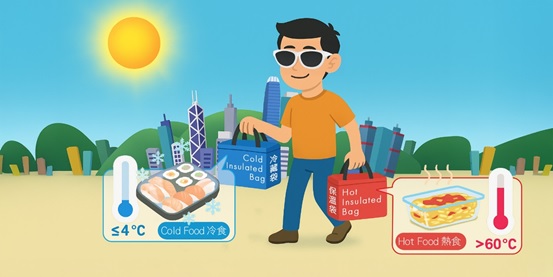
Food Safety Focus (227th Issue, June 2025) – Article 3
Summer Food Safety Tips – Safe Temperature is of the Essence
Warmer weather in summer raises the risk of foodborne illnesses, as higher temperatures allow food to enter the Temperature Danger Zone (i.e. between 4°C and 60°C) where food poisoning microorganisms like Salmonella and Staphylococcus aureus can thrive and proliferate quickly. High-risk foods such as sushi and frozen confections are particularly vulnerable as they are ready-to-eat foods without further heat treatment. Besides, bacteria such as Bacillus cereus can produce heat-stable toxins if cooked food is left at room temperature for too long.
By maintaining proper storage temperatures and food handling practices, we can reduce the risk of foodborne illnesses during the hot summer months. For example, chilled and frozen food should be stored at or below 4°C and -18°C respectively. Installing thermometers in chillers and freezers can help to monitor the temperatures of storage compartments regularly. Hot food should be kept at above 60°C. When food has to be kept at room temperature, strictly follow the 2-hour / 4-hour rule to determine whether the food should be safe to keep, to eat or to throw away.
 Figure 3: Storing food at safe temperatures to ensure food safety
Figure 3: Storing food at safe temperatures to ensure food safety

